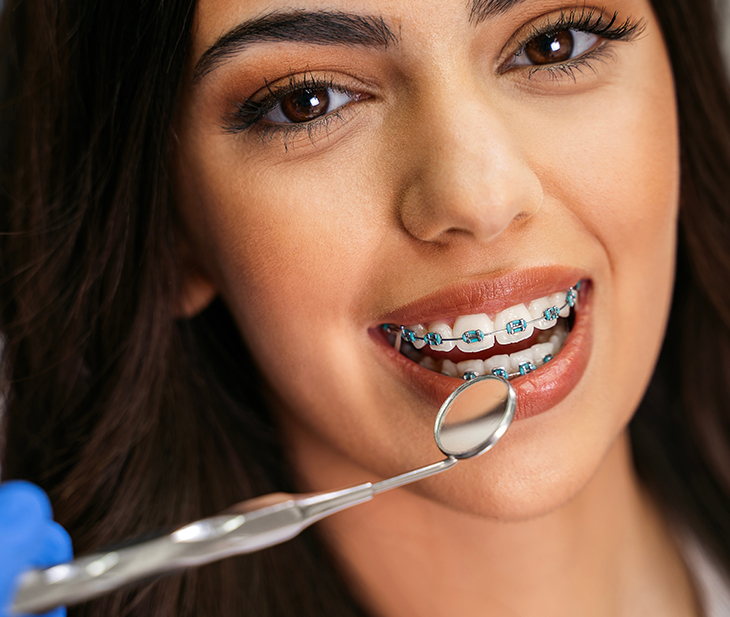What constitutes an orthodontic emergency?
There can be normal, day-to-day discomfort associated with wearing braces, and there are also orthodontic emergencies. How do you make sense of the difference between the two? We’ve put together a guide for you to use during treatment, and also outlined what you should do if an emergency arises.
So, what is normal during your orthodontic treatment?
Orthodontic treatment is not usually uncomfortable, but there will be times throughout treatment that your mouth, teeth, or jaw may feel sore, tender, or somewhat painful.
One of these times will likely be when your braces are first applied. It will take your teeth and mouth some time to adjust to the braces; your teeth may feel tender, and the new braces may irritate the inside of your cheek and lips at first.
This will be uncomfortable for a short while, but it won’t be long before your mouth grows accustomed to the braces, and you’ll feel normal again in no time.
You may also feel some discomfort is after your adjustment appointments (or, if you’re using Invisalign, after you change to the next set of aligners), because your teeth will need to adjust to the new position and pressure of the orthodontic appliance. Again, this will pass fairly quickly.


What is an orthodontic emergency?
First, it’s important to realize that most orthodontic emergencies can be handled at home. Before visiting the office, we encourage you to contact our Treatment Specialists, who can assist with emergencies from home. Additionally, if an appointment is required, our team can help you get in fast and get you out of any associated pain or discomfort.
Even though most situations can be easily solved at home, there are some instances that may require more assistance. These can include:
What should I do if I have an orthodontic emergency?
The most important thing to do is not to panic! Braces are very safe, and at most you may experience some pain or discomfort in your mouth.
What should you do if something feels wrong?
Identify the problem. Use a mirror or have a family member look in your mouth to identify what’s wrong.
Can you fix it from home? Use the guide below to try and fix the problem from home. Most issues can be treated at home with tools you already have!
If fixing it at home doesn’t work, or any of the above emergencies apply (trauma to the mouth or face, infection, etc), then contact SmileLife Orthodontics for assistance.
If you have a medical emergency, call you medical doctor for assistance.
Questions? You’re covered.
Loosened brackets, or brackets detaching from your teeth, can happen – and neither are serious emergencies. This can result from eating hard/sticky foods, playing with the brackets, or bumping into something with your braces.
If a bracket comes loose or breaks, leave it in place, covering it with wax if needed for comfort. If the bracket breaks off entirely, just remove it and leave it alone. Your braces will still work properly without it until your orthodontist can affix a new one.
If the ends of your braces wires are poking out and causing discomfort, there are several ways to fix the issue.
Push the wire back into the moral tube using the disinfected eraser end of a pencil or a clean cotton swab.
Place a ball of wax on the end of the wire to protect your gums.
Trim the wire using clean, disinfected nail clippers. Use rubbing alcohol to clean the clippers, and then trim the wire back to a comfortable length. You may need a mirror or a family member to assist you!
Sometimes you may feel pain or soreness as your teeth adjust to their correct positions. This is normal and nothing to worry about! You can take Tylenol or Advil to manage the pain.
As your teeth move into their correct positions, they may feel loose – don’t worry, they are not going to fall out! They are merely shifting correctly. The looseness will fade as you get accustomed to the movement!
Sometimes your gums or mouth may be irritated by contact with your braces; in certain cases, this irritation causes small sores or ulcers. While they can be uncomfortable, they are normal and will go away quickly.
Avoid touching them with your fingers. Cover the irritating bracket or wire with wax, and take Tylenol or Advil if you feel pain. They will fade quickly as your mouth heals.
In some instances, the wire may have slipped out completely from the molar tube. If this happens, try and fit it back into the molar tube with your fingers or with clean tweezers. If you can’t fit it back in, you can also clip it back with clean nail clippers and remove the loose piece (the wire is still fixed in place by the other brackets and so treatment won’t be affected).
If your braces use steel ligatures to connect wires and brackets, these sometimes can unwind and poke your lips, gums, or other parts of your mouth. If this happens, try to push back into place with the clean eraser end of a pencil. Or use wax to cover the end of the poking wire.
We use rubber elastic bands over the brackets to help keep the wire in place – but if one comes off, it’s okay, your treatment will not be interrupted! The brackets are crimped around the wire, so the rubber bands act as an added precaution. If the wire is getting loose, push back in place with a clean tweezer.
